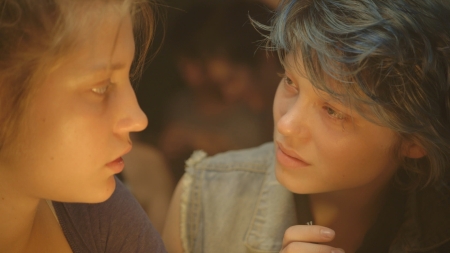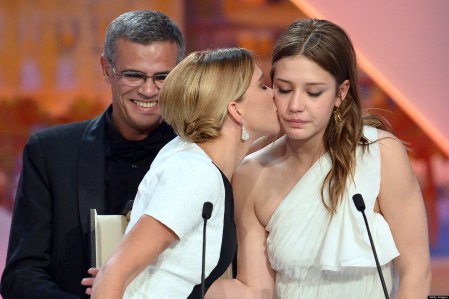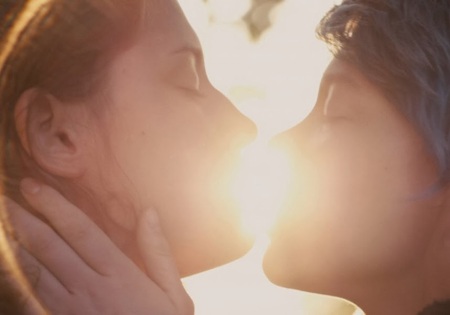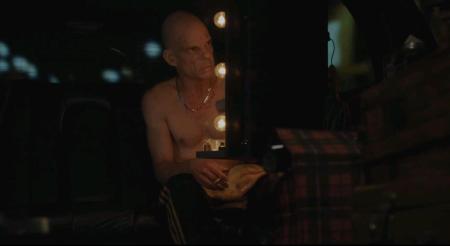Blue is the warmest color is one of the most controversial films in recent memory.
The director came under attack for not representing lesbian sex accurately; as well as putting the cast and crew through hell – the shoot lasted for 5 1/2 months. Even the author of the graphic novel upon which the film is based claimed the sex scenes to be the product of a male heterosexual gaze, projecting his own sexual fantasies onto the material.
Personally I think the reactions are more likely to stem from the fact that we’re not used to seeing explicit sex scenes continue for so long. (One sex scene lasts eight minutes.) Meanwhile, the criticism of the actual sexual acts not being accurate has been put to rest by other lesbian commentators.
As Kechine dissects the human condition and the intensity of falling in love for the first time it’s only natural he explores emotions as well as sexuality. Early on in the film, Adele has sex with her boyfriend, likely for the first time. There is a marked difference between the look in her eyes in this scene compared to the later scene with Emma. This is not exploitation; Kechiche is onto something meaningful.
Another gut-wrenching scene is the breakup. It’s almost physically painful to watch. Apparently Kechiche kept the cameras rolling for hours without interrupting, and it shows. The fear and desperation in Adeles eyes is a real as anything you’ll ever seen on the celluloid.
After the breakup-scene we follow Adele as she continues her daily routines, particularly in her job as a teacher. Although she goes through the motions and seemingly fulfills her duties as normal, interacting with the innocent children, we can see that she is empty, broken. Even as she walks down the street, little subtleties in her body language reveal her endless guilt and sadness. Kechiche communicates this contrast between what’s going on on the inside and outside expertly. One way he does this is by returning to a place of significance from earlier in the film; the park where Adele and Emma share their first kiss. Screenshots from the earlier scene in the park:
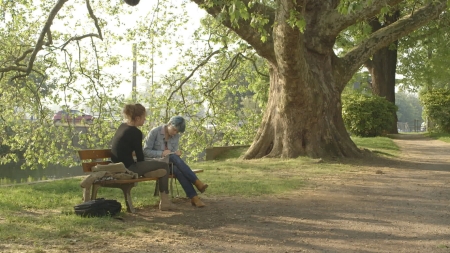
The scene is beautifully shot straight towards the sun coming through the leaves.
Later, Adele has returned to the same park, the same bench, and underneath the same tree. The contrast between the beauty of the image and the torment of Adeles emotional state serves to further underline the emotions we feel as spectators:
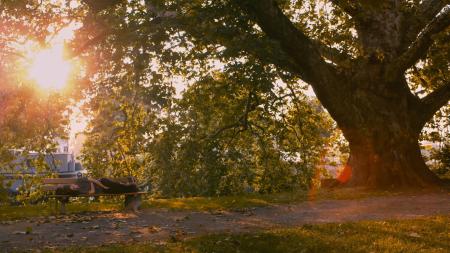
Kechine then cuts to a close up of a pair of fingers nervously tapping against a window-sill. It’s a beautiful moment that in an instant speaks volumes about what Adele is going through.
Blue is the Warmest Color has become another chapter in the ever-ongoing debate about how far you can push the people around you in the attempt to achieve an artistic vision. And while the shoot may have been difficult, the work lives on. And in the case of Blue is the Warmest Color, it is a testament to a director and two actors working together and making great sacrifices, in order to create a work of true art.
